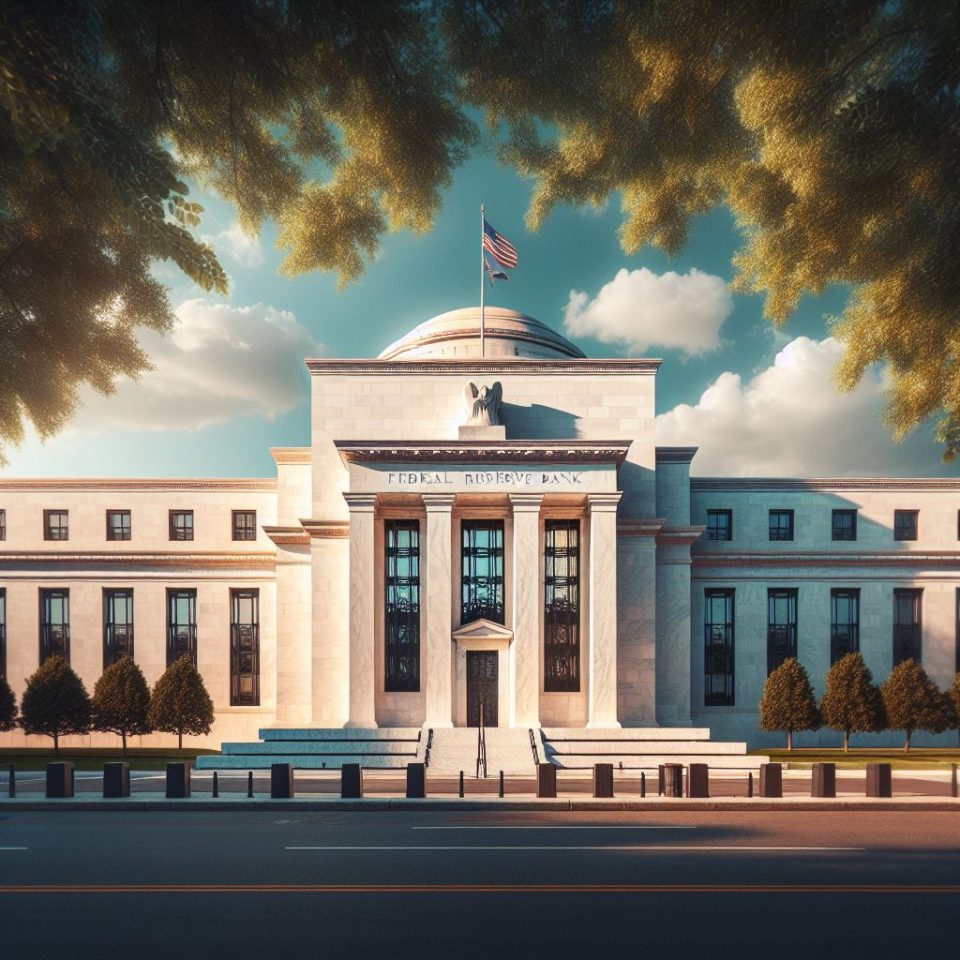In a move that resonates with the echoes of monetary decisions past, the Federal Reserve opted to hold its benchmark interest rate steady on Wednesday, maintaining it within the 5.25% to 5.50% range. This marks the loftiest level witnessed since the early days of the new millennium in 2001. However, the central bank sounded a cautious note, asserting that it won’t embark on a path of interest rate reduction until it observes tangible progress in steering inflation back to its coveted 2% target.
The Federal Reserve opted to hold its benchmark interest rate steady. In the language of the Federal Reserve’s policy statement, it resounded, “The Committee does not expect it will be appropriate to reduce the target range until it has gained greater confidence that inflation is moving sustainably toward 2%.”
At the helm of this monetary ship, Federal Reserve Chair Jerome Powell held a press conference on Wednesday afternoon, delivering a measured response to market expectations that had been clamoring for a rate cut as early as March. Powell poured cold water on such notions, stating that March was “probably not the most likely case or what we’d call the base case.”
“I don’t think it’s likely the Committee will reach a level of confidence by the time of the March meeting to identify March as the time to [cut rates],” Powell asserted with a characteristic precision reminiscent of a seasoned conductor guiding a complex symphony.
Powell dismissed the notion that the Fed requires “better data” but rather emphasized the need for “more good data” and the “continuation of the data we have been seeing.” In a candid admission, he acknowledged that the six-month data is indeed “good enough,” highlighting that the Fed’s preferred inflation gauge remains below its target.
However, Powell, always the pragmatist, underscored the central bank’s desire for “more evidence that confirms what we think we’re seeing” concerning the recent dip in inflation, an indication of the nuanced approach the Fed is adopting in navigating the economic landscape.
When probed on whether the Fed had achieved a soft landing, Powell, in a moment of transparency, responded, “No, I wouldn’t say we’ve achieved that. We have a ways to go. Core inflation is still well above target on a 12-month basis.” He tempered any premature declarations of victory, asserting, “Certainly, we’re encouraged by the progress but we’re not declaring victory at this point.”
The timeline painted by the Federal Reserve unfolds against a backdrop where officials last raised rates in July 2023, and expectations now loom of an impending rate cut sometime this year, with the median anticipating three such cuts.
While acknowledging that cuts are on the horizon, Fed officials on Wednesday emphasized the shifting balance of risks, noting that the quest for price stability and the maintenance of full employment are “moving into better balance.” In a linguistic shift, the central bank adopted a more encompassing term, referring to “any adjustments” it may need to make to its interest rate policy in the future.
Gauging market reactions, data from the CME Group reflected initial expectations of a 55% chance of the Fed lowering interest rates in March. However, Powell’s clarifications saw those odds drop to 36%, with investors now pinning a 56% likelihood on a rate cut in May.
In a nod to a resilient economy, Federal Reserve officials acknowledged the stronger-than-expected fourth-quarter GDP, characterizing the nation’s economic trajectory as “expanding at a solid pace.” Although conceding a moderation in job gains over the past year, the Fed maintained that job gains remain “strong.”
A subtle yet noteworthy alteration in language was observed as the Fed removed its characterization of the U.S. banking system as sound and resilient, simultaneously eliminating any mention of the potential impact of tighter financial and credit conditions on households. This nuanced pivot underscores the central bank’s meticulous calibration of its policy approach amid a complex economic landscape.
The latest signal from the Federal Reserve, indicating a reluctance to further hike rates in the face of stronger-than-expected economic growth, accentuates the myriad surprises the COVID-era economy has sprung upon prognosticators.
Reflecting on the economic landscape, Powell articulated, “Whereas a year ago we were thinking that we needed to see some softening in economic activity, that hasn’t been the case. We look at stronger growth — we don’t look at it as a problem. I think we want to see strong growth; we want to see a strong labor market. We are looking for inflation to continue to come down.”
Indeed, inflation, the central bank’s primary concern, has shown signs of abating. The core Personal Consumption Expenditures index, the Fed’s favored inflation metric, stood at 2.9% in December, a notable drop from 3.7% in September and 4.3% in June. This marked the lowest reading since March 2021. More encouragingly, on a three-month annualized basis, core PCE inflation fell to 1.5%, its lowest since late 2020. On a six-month basis, core PCE remained at 1.9% for the second consecutive month. In contrast, the Consumer Price Index on a core basis reported a 3.9% inflation rate in December.
When queried about the specter of a hard landing, Powell dismissed such concerns, citing a year of “solid to strong” growth, an unemployment rate under 4%, and six months of data indicating a moderation in inflation. He struck an optimistic note, stating, “This is a good situation, let’s be honest. This is a good economy.”
In a strategic move reflecting the measured orchestration of economic policy, the Federal Reserve opted to hold its benchmark interest rate steady, navigating the complexities of an evolving economic landscape with a deliberate and nuanced approach.
Source: Yahoo Finance

